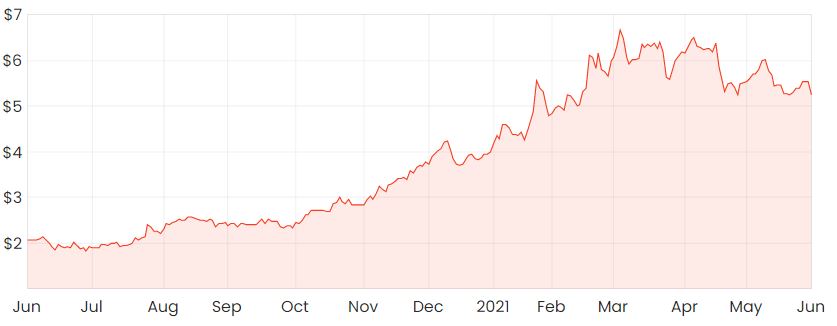The Lynas Rare Earth Ltd (ASX: LYC) share price continues to be volatile. Despite a pleasing quarterly report released in April, shares are down 15%.
Even after this recent dip, Lynas has a market capitalisation just shy of $5 billion. Is now a buying opportunity?
LYC share price

What does Lynas do?
Lynas is one of only two companies in the world that’s involved in rare earth processing outside of China. Its deposit is located in Mt Weld, Western Australia, where its products are eventually used in things such as electronics, catalytic converters, and electric vehicles (EVs).
Lynas’ raw materials are shipped to its processing facility in Malaysia to be separated into high-quality rare earth materials.
What’s caused the volatility?
Like any commodity producer, Lynas’ share price will be partly leveraged to the underlying spot prices of what it produces – in this case, rare earths.
The spot price of Neodymium (NdPr), a magnet material widely used in electronic devices, has fallen around 10% throughout the month of May.
Spot prices for Dysprosium and Terbium have also followed a similar downward trend over the past month, which could partly explain the weaker sentiment towards the Lynas share price.
In the last quarterly update, Lynas also indicated Northern Rare Earth, a global leading rare earths supplier will be doubling its production within the next three years to accommodate for anticipated demand.
The implication here is that as global supply increases, this could result in further downward pressure on spot prices therefore and negatively impact the profitability of producers such as Lynas.
Time to buy Lynas shares?
Lynas definitely seems to have some quality assets and it’s in a strong competitive position due to it being the largest supplier in the world outside of China.
If the thematic around rare earths and their various use cases remains to be positive, Lynas could stand to benefit significantly.
I do find the valuation to be a tricky component of an investment such as this, however.
If you believe Lynas’ current valuation reflects all future cash flows, this would prove to be challenging if you’re forecasting spot prices and production levels 5-10 years in advance.
As part of the Rask investment philosophy, we try to look for companies that aren’t leveraged to an underlying commodity.
For more reading, I’d recommend getting a free Rask account and accessing our full stock reports. Click this link to join for free and access our analyst reports.





